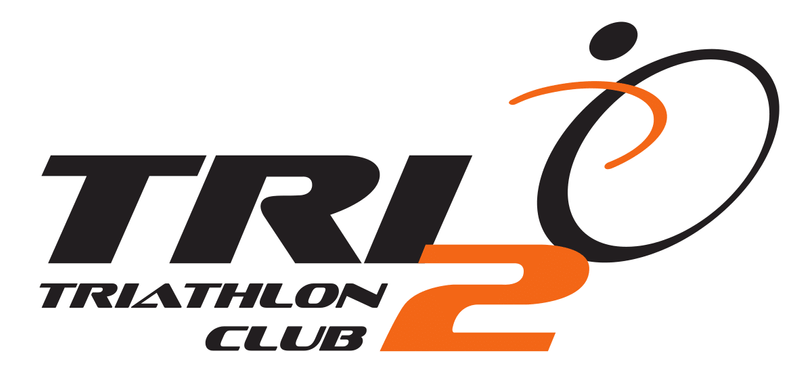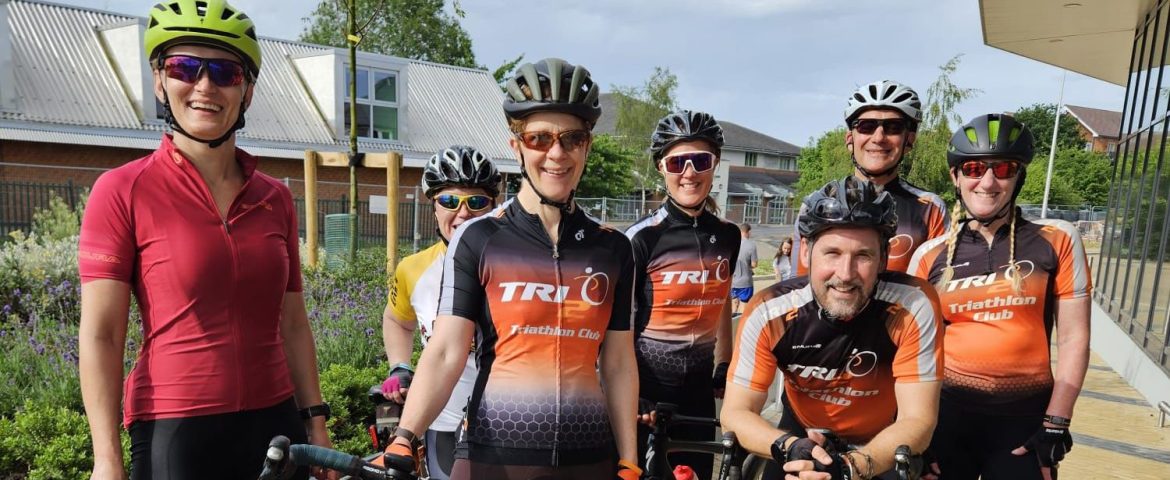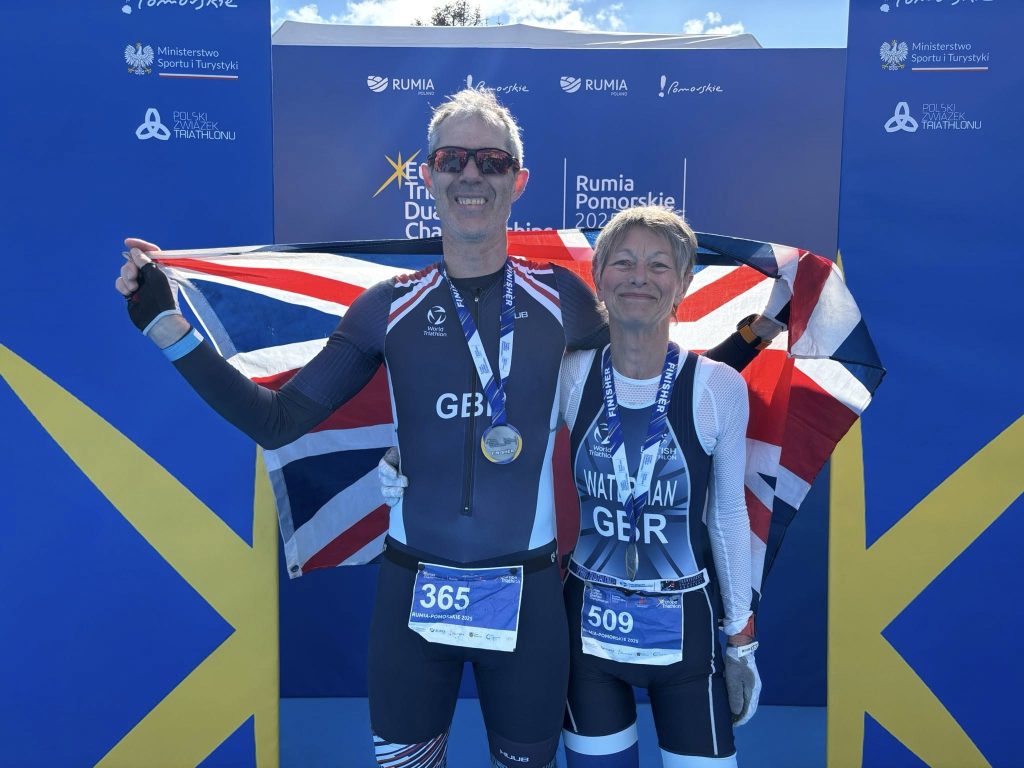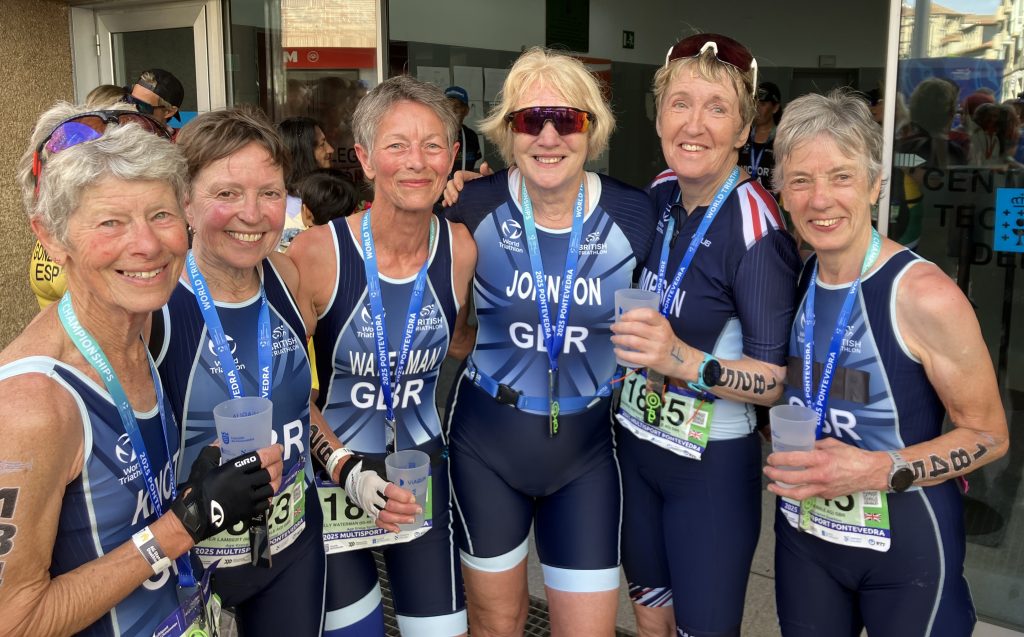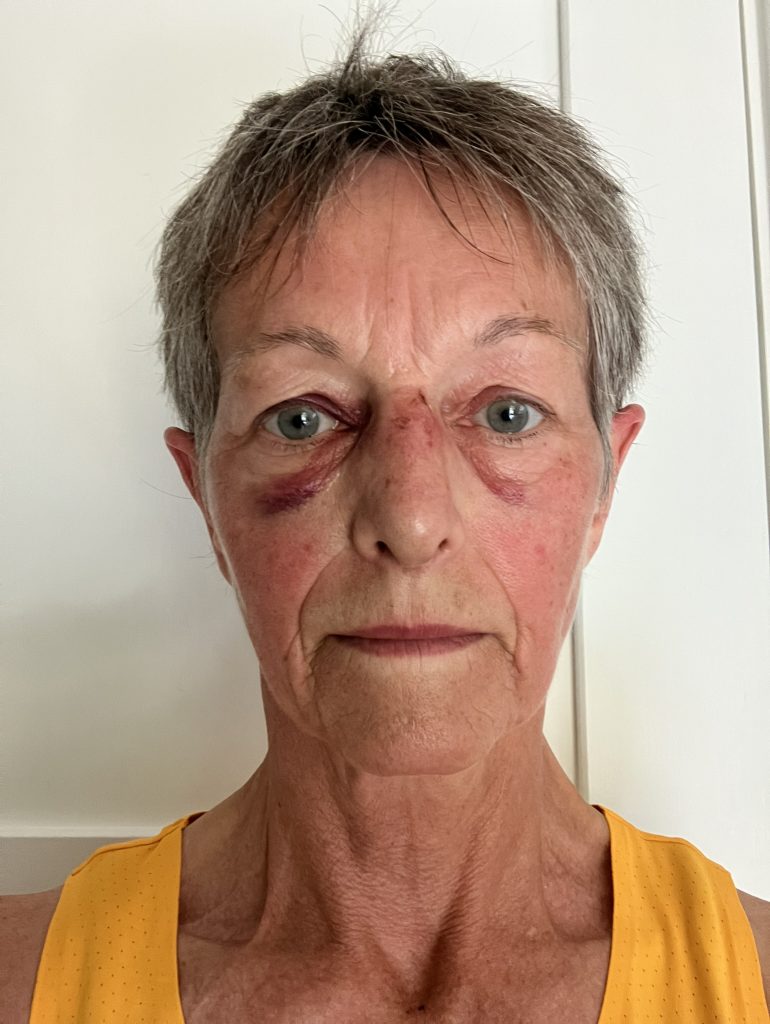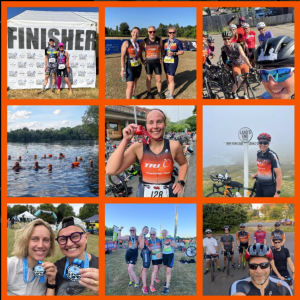Newsletter June 2025
Upcoming Events
Check club Stack Team App for all upcoming events.
Tri2O Key Dates for the calendar:
- Tri2O Key Dates for the calendar:
- 15th Aug Tri2O team pizza social
- 17th Aug the Oxfordshire triathlon standard distance
- 7th Sep Newbury triathlon sprint
- 14th Sep Reading triathlon (congratulations to winner of Reading Triathlon April giveaway – David Frew)
Club regular events:
- New Tuesday – Paceline/Chain gang training ride
- Monday, Wednesday, Friday, Sunday – coached swim sessions
- Monthly Social Parkrun – 1st Saturday of the month
- Monthly Social Tri2O lake swim – 3rd Saturday of the month
Membership Update
Please join me in welcoming our new members to the club:
I hope you will enjoy training with us. For anyone that wants to get the most out of the club and would like a call to talk this through – please let me know.
Tri2O Social Events Recap
In June, we joined forces with TVT for an evening of community, movement, and pizza. The night started with a chilled-out lake swim, no set distance, swim as much or as little as you like. That was followed by a relaxed 20km bike ride in friendly, chatty groups, and then a 5km or 2.5km run/walk to finish things off. Fresh pizza was served on-site while everyone hung out, shared stories, and wound down together. Big thanks to everyone who came along, brought good energy, and chipped in to the pizza fund. Thanks as well to the Tri2O members who joined us, in total, we were 25 strong.
Throughout the year, we host several social meetups like this, pizza evenings in Reading, our annual awards night, BBQs, lake socials, parkruns, and group bike rides. If you’re new to the club, these are a great way to meet other members and get involved.
The next Pizza Social is on Friday, August 15th at 7PM at Zia Lucia, Reading town centre. Sign up on TeamApp.
If you have an idea for a social meetup, please get in touch with Stella at social@tri2o.club.
Coach Corner
DOs and DON’Ts of Event Preparation
Race season is in full swing, with so many varied and impressive achievements shared in the Hall of Fame WhatsApp group. If you’re not in it yet, you’re missing out on inspiration and celebration in bucket loads!
Here are some tips to help you get the most out of your races or events. I say “events”, because I don’t really race any more, I enter events for enjoyment, and don’t set performance goals beyond getting to the finish (ok, maybe making the most of the feed stops).
It’s totally normal to feel nervous before a race – anything from a little bit of butterflies, through to full-blown panic, self-doubt and inability to eat or sleep. There are, however, things you can do to help prepare for events, which will also increase your chances of enjoying the day.
I’ve laid it out as a table of DOs and DON’Ts, starting from the few weeks leading up to a race, all the way up to race day.
| DO Read all the pre-race info carefully, re- read it, watch any videos | DON’T Leave this till the night before the race |
| DO Know the course! Put it on your device, and memorise key junctions / tricky bits | DON’T Assume that because you’ve done a race before, it will be exactly the same! |
| DO Consider a bike course recce – even driving it is hugely beneficial | DON’T Rely on others to go the right way |
| DO Write a kit list by visualising every step of race day & keep it updated | DON’T Leave your packing till either race morning or late the night before (i.e. after shops have closed!) |
| DO Check what nutrition/hydration will be available at the feed stations/finish | DON’T Try anything new on race day! |
| DO Practise your nutrition/hydration in training, and note what works and what doesn’t | DON’T Forget to trial your pre-race breakfast in training, ideally before a race-intensity session with appropriate timing |
| DO Prepare for a possible non-wetsuit swim by practising in open water without one | DON’T Assume it will just be “fine” on the day |
| DO Write a race plan! | DON’T Try anything new on race day! |
| DO Include process goals in your plan e.g. I will count strokes / sight every 6 strokes, start position, run posture, take a gel at x min, drink every 10 min, maintain cadence of x rpm on bike | DON’T Make all your goals about outcomes (e.g. top 10) because you have no control over who turns up on the day and what they will do |
| DO Include pacing strategies in your plan – how are you going to measure and control your intensity? | DON’T Go off too hard |
| DO Be realistic with your goals (but you can always have secret wildly ambitious dream goals as well – you | DON’T Expect a miracle to happen on race day and to suddenly run a 25 minute 5km when you’ve never run faster than just need to know they are this!) 30 minutes in training! |
| DO Calculate what pace/speed is required to produce given split times | DON’T Make all your goals about times |
| DO Still write a plan even if your goal is completion or enjoyment – just tailor your plan to take that into account | DON’T Believe that you can’t control whether you enjoy the experience – actionable goals like thanking marshals, smiling at supporters, can all help you enjoy it |
| DO Check the weather forecast and adjust your goals accordingly | DON’T Expect to pull out a PB in pouring rain or 30 degree heat or a howling gale |
| DO Think about what might go wrong and how you might deal with it | DON’T Worry about jinxing things |
| DO Remember to focus on YOUR race | DON’T Worry about what anyone else is doing or make assumptions about others |
| DO Remember WHY you’re doing it! | DON’T Get caught up in comparisons |
| DO Reach out to others before the start to help calm nerves – trust your instincts to identify “kindred spirits” | DON’T Assume that someone is unfriendly – they may just be totally focussed or nervous! Don’t take it personally! Everyone deals with race day differently |
| DO On race day walk through all the stages of transition – swim in, bike out, bike in, run out, etc. so you are prepared | DON’T Rely on looking for race numbers to identify where you are racked – in the heat of the race that’s a nightmare |
| DO Look at landmarks / flags / trees / banners to “mark” your transition spot | DON’T Panic if you can’t find your bike! Slow down and take a breath |
| DO Prioritise sleep and rest in the 2 days before a race | DON’T Stress if you don’t sleep well the night before – it won’t doom your race |
| DO Focus on the things that are within your control | DON’T Worry about the things that are not within your control – it won’t help |
| DO Remember that your “slow” may be faster than someone else’s PB – consider this when you talk about your times | DON’T Immediately ask people their times after a race Humble brag on Strava |
| DO If you have time, stay for the podium / prize-giving to celebrate others’ achievements | DON’T Forget that most marshals and event staff are volunteers, giving up their time to help you – so thank them if you can |
| DO Wait a day or so before writing a race review to reflect on what went well, what you are proud of, and how you might do things differently in future. | DON’T Just focus on your times – look back at your plan and process goals and consider whether things that didn’t go according to plan were within your control |
| DO Remember this is a hobby | DON’T Forget to have fun �� |
Mountain biking in Morzine by Martin Jeffery
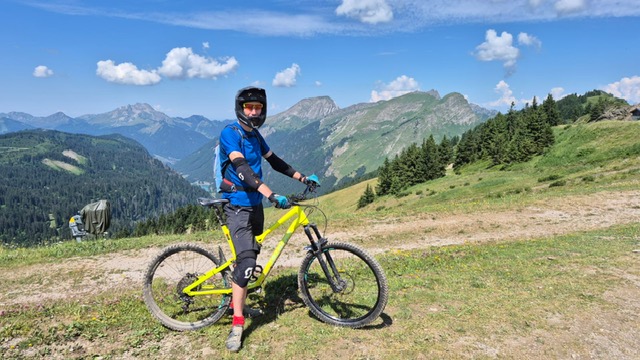
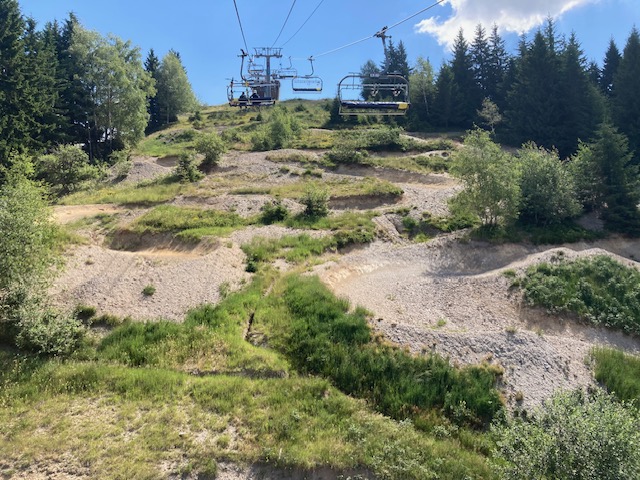

For those of you who enjoy a bit off of road, I have just come back from a MTB trip to Morzine. A group of us drove down, to save breaking down the bikes, really easy drive but about 8 hours from the tunnel exit.
I’ve only ever skied in the Alps but the scenery without snow was just as stunning. We had good weather, 25-30 degrees. A bit dusty on the trails but a couple of afternoon thunderstorms damped down the trails.
I’d say a Red Trail at Swinley correlates to a Blue at Bike Park Wales, equally a Red at BPW is like a Blue in Morzine! Essentially BPW on steroids!
The lift network is fantastic, just hook your bike on a ski lift then smile (panic) all the way down. We rode a lot of trails but kept mostly to the blue runs with the odd easy red. One red we saw from the lift had a road gap jump! Christ knows what a black looks like…
If you like big berms, table tops and drop offs, you’ll love it.
Great for bike handling skills…
Martin Jeffery
Two very different championship races
European Sprint Distance Duathlon Championships, Rumia, Poland
At the end of April, we headed to Poland, for the first time, to compete in the European Sprint Duathlon Championships which was being held in Rumia, a town about 35km north of Gdańsk. We had again decided to outsource all the travel and accommodation arrangements to Nirvana and everything went smoothly. We stayed in the Team GB hotel which was great for mingling with other Team members and we caught up with people we’d not seen since the championship race last year (I had not raced since). The hotel was good but next to a dual carriageway on the outskirts of the town centre. The race and eating places were all on the other side of the road and there was no bridge or underpass nearby. Fortunately, once on the other side of the dual carriageway there were plenty of cycle paths and quiet roads, although finding places to eat that were open in the evening was more of a challenge! We did a recce of one loop of the run course and took a newbie in my AG (and eventual podium finisher) on a bike course recce.
The run was straightforward with a long but very gentle descent to a junction and back up toward transition, twice for the first (5k) run and once for the second. Although there were very few people cheering on the course, the race start and finish area was buzzing with people…. there were a lot of Poles competing! The transition area was in a carpark in front of a parade of small shops, not very memorable. The bike course went out of town along a main road with a right hand turn for an out and back for a few kilometres before continuing to the main road and to the far turnaround point. It was virtually flat so it was going to be fast and I was looking forward to it, despite a niggling anxiety about having to do two tight turns without getting in the way of other competitors (anyone who has ridden with me will be aware that turns are not by forte!).
The atmosphere in transition on race day was pretty chilled (as was the weather – ideal racing conditions) and we quickly set up our bikes and kit and did a walk around to familiarise ourselves with the run and bike in/out routes. All was very straightforward and well signed. Sean helped ‘the newbie’ who was in an understandable panic over some issues with her bike. I’ve been part of the GB team, initially as a triathlete and duathlete, but now just the latter, since 2012. One of the most rewarding aspects of being part of the GB team is meeting people who have taken up the sport and joined the team later in their lives and helping them navigate the many things that need to be done before and on race day and trying to keep them focussed on what they can control.
I was happy with most elements of my race and particularly pleased to be ahead of three GB athletes in my AG on the first run considering how slow my parkrun times had been prior to the race! I worked really hard on the bike and for the first time ever in a race was able to work with someone (Elspeth, a multiple gold medal winner in an older AG) for most of the 20k bike leg, enabling me to stay ahead of several others in my AG. However, riding the bike leg as if it was a time trial was in hindsight probably a mistake but I was enjoying it so much that I forgot that I still needed to run again. My second run was painfully slow and I slipped back two places in my AG despite the encouragement of Elspeth as she ran past me, maybe that would have happened anyway, I’ll never know. I was 6 th out of 9 people in my AG and ahead of two other Brits.
World Sprint Distance Duathlon Championships, Pontevedra, Spain
At the end of June, we headed to Pontevedra in Galicia for the third time to compete in the World Sprint Duathlon Championships. The first time we competed here was in the standard duathlon race in 2014, returning in 2019 for a sprint duathlon. Pontevedra is a lovely old riverside town situated in a steep-sided valley with a traffic-free centre and a patchwork of narrow, sometimes cobbled, undulating streets. The run course takes you up and down through them. The bike course heads out of town and climbs for almost 9 km before turning around for a very fast descent – some competitors have provided evidence from their Garmin data of hitting 70 kph. As we’d ridden the course before we agreed we didn’t need to recce the climb which would tire our legs, although many other older competitors did. We did however do a short flattish ride to check the bikes were OK and I practised mounting and dismounting on a wide pedestrianised bridge which was bizarrely devoid of people.
This was, as was expected because it was a world championships, a much larger event than the one in Rumia and we had to rack our bikes the day before the race. Following the theft of a GB duathlete’s bike from transition at last year’s event in Ibiza, and the subsequent refusal of her insurance company to pay out or the organisers to take responsibility (security was inadequate), there was much chat on the Team GB Facebook group about whether to take a lock of not. Some said they would but we didn’t and I didn’t see anyone lock their bike to the racking. We racked our bikes and did the familiarisation walk of the run and bike in/out routes (multiple times in my case as they were long and much more complex than in Rumia).
Since Rumia I’d upped my run training and had been doing some short fast intervals once a week, motivated by a desire to run faster, especially on the second run, and get ahead of some of the GB competitors in my AG that I’d been closest to in the last few races. However, in May I had to do a lot of driving to and from Dorset to visit my father in hospital and then to move him into a care home and, as has been the case for several years, this triggered a flare up of my proximal hamstring tendinopathy on my right leg. This put an end to speed work as it was too painful and, in an effort to help it settle down, I dropped my weekly run distance (at 25k it was never high!) and took the train instead of driving. Despite this set back my parkrun times had improved and I’d manged to consistently run a sub-30 min and
even a sub-29 min 5k.
The night before the race we ate well at one of our favourite restaurants close to the GB Team hotel and tried to block out the raucous voices of some of the US team who had also made it their favourite place to eat and, surprisingly, drink bottles of wine. On race day we were very relieved that the temperature was much cooler (21°C) than in Reading and there was no wind. The run starts on an athletics track and I headed out trying to keep with Elspeth (although her husband later told me she was trying to keep with me!). I couldn’t keep with her on the second lap but I was delighted to find out after the race that I’d run my fastest 5k for a couple of years. T1 went well and I managed to avoid stumbling into one of the
many holes in the grass where shot put balls had landed as I made my way out onto the road.
I had deliberately ridden more and longer hills than I usually do in the 2 months before the race and I felt strong on the climb and very happy to hear later from a faster GB duathlete in my AG (Denise) that she had tried to catch me but couldn’t. One of several areas in which I lose time in races relative to others is on steep downhills as I prefer to be on the brakes. I’d been practising and training my brain to not freak out and it worked as I descended faster than I’d ever done before. However, I was concentrating so much on not braking that I forgot to pedal until Denise came flying past me! My second run was much better than in Rumia, helped by the many people lining the course cheering and shouting my name or ‘come on GB’. The other main motivator for me to run hard was that a US team member in my AG (we have it tattooed on our calves) came past me on the uphill cobbled section. I resisted the temptation to try and get past her going uphill and set my mind to doing the hardest effort I could sustain once we crested the hill to get as far ahead of her as I could on the downhill section. I felt like I was flying down the hill and the tactic worked as I didn’t see her again – the results show I beat her by 8 seconds. I was 9 th out of 17 in my AG and felt I’d raced well so was happy with that despite being the slowest Brit (the two that I beat in Rumia were not racing)….. maybe I could have got ahead of the Mexican who was 40 seconds faster had I pedalled earlier on the bike. There’s always something that can be learnt from a race – this was my 21st for Team GB and hopefully not my last.
Sally Waterman
